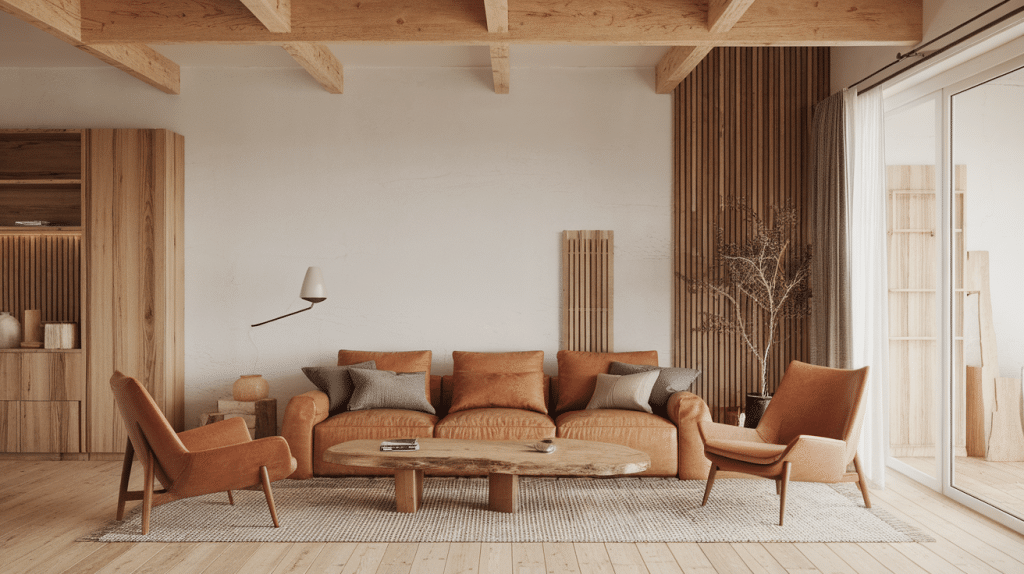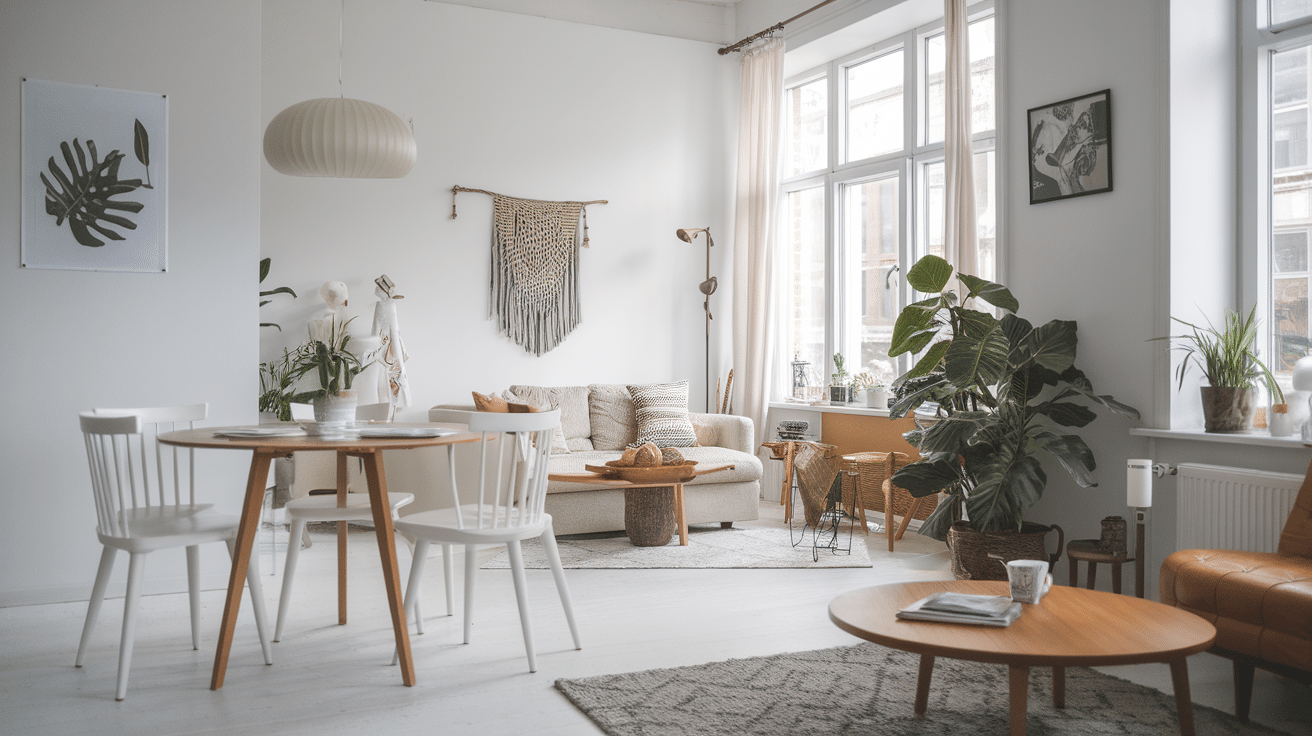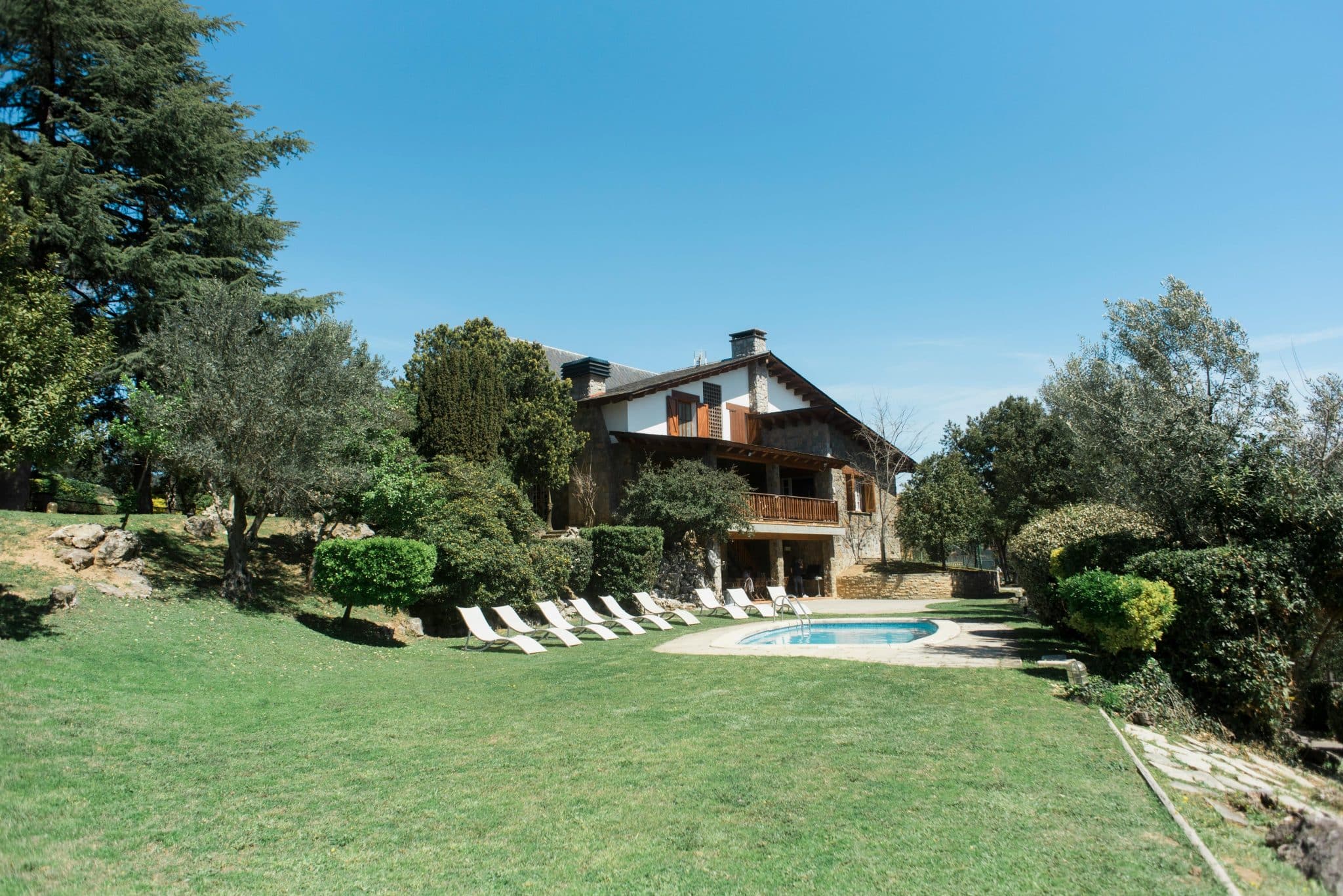Step into a Scandinavian home and feel it instantly—the quiet confidence, the thoughtful simplicity, the natural warmth against clean backdrops. This isn’t just another design trend; it’s a lifestyle philosophy shaped by northern winters and practical needs.
Modern Scandinavian design captivates for good reason. It creates spaces that breathe, where light dances across minimal furnishings, natural materials bring the outdoors in, and everything serves both eye and purpose.
But what makes this approach so irresistible worldwide? Perhaps it’s how it changes ordinary rooms into extraordinary havens without complexity or how it proves that less truly creates more—more light, more calm, more living.
Join us as we break down the essentials of this beloved style and show how to bring its quiet magic into your own spaces.
The Historical Roots of Scandinavian Design
-
Origins: Emerging from Nordic folk traditions in the late 19th century.
-
Golden Age (1930s-1960s): Designers like Alvar Aalto, Arne Jacobsen, and Hans Wegner created iconic, functional pieces.
-
Social Values: Built on the belief that well-crafted, beautiful objects should be accessible to all.
-
Global Recognition: The “Design in Scandinavia” exhibition (1954-1957) and IKEA’s 1943 founding brought Scandinavian design worldwide.
-
Longevity: Continues to evolve while staying true to its core principles—simplicity, functionality, and nature. Timeless design that lasts.
The Scandinavian Color Psychology: Beyond Just White
While many associate Scandinavian design with white walls, there’s more to it than meets the eye. The Nordic approach to color is rooted in color psychology—it’s not about absence but how specific hues can affect mood and well-being through the changing seasons.
The iconic white walls serve a practical purpose: they reflect the limited light during long, dark winters. However, take a closer look at authentic Scandinavian homes, and you’ll see more than just white. The color palettes are inspired by the Nordic landscape: soft blues like frozen lakes, gentle greens echoing forests, and warm terracottas reflecting traditional wooden cottages.
Scandinavians understand the power of color to influence emotions. Cool blues and greens bring a sense of calm, while small doses of yellow and orange add warmth during winter.
This thoughtful, intuitive use of color—rather than strict rules—gives Scandinavian interiors a dynamic, responsive feel, a key element often overlooked in discussions about the style.
Key Features of Modern Scandinavian Interior Design
Simplicity and Clean Lines
Scandinavian design embraces simplicity with straightforward layouts, clean lines, and minimal clutter. Spaces feature neutral tones—whites, creams, and soft grays—creating a sense of openness and calm.
Furniture showcases straight lines and smooth surfaces without excessive ornamentation. Open floor plans allow light to flow freely, resulting in spaces that feel fresh and thoughtfully arranged, regardless of size.
Natural Materials

Wood, particularly lighter varieties like pine and birch, dominates Scandinavian interiors, often minimally treated to highlight natural grain patterns.
Leather, wool, cotton, and stone bring varied textures that add warmth to minimal spaces. This focus on natural elements reflects Nordic values of sustainability and environmental respect, with pieces crafted to last generations rather than following short-lived trends.
Light and Airy Spaces
With limited winter daylight in Nordic countries, Scandinavian design prioritizes light maximization through minimal window coverings, light-colored walls, and reflective surfaces.
Lighting fixtures serve dual purposes as functional tools and design statements. Layered lighting from pendants, sconces, and floor lamps creates warm, directed illumination. Candles appear frequently, adding soft, inviting ambiance during darker months.
Functional Furniture and Storage
Multi-purpose furniture defines Scandinavian practicality—think of sofas with built-in storage or expandable dining tables.
Clever storage solutions maintain the uncluttered aesthetic through hidden compartments, wall-mounted shelving, and thoughtfully designed cabinets.
This focus on functionality reflects the Nordic belief that beauty and utility should coexist, with each piece serving a genuine purpose beyond mere decoration.
Types of Scandinavian Interior Styles
Nordic Minimalism
Nordic minimalism is the purest form of Scandinavian design, embodying “less is more” at its finest. These spaces showcase extremely clean lines, restricted color palettes (primarily black, white, and wood tones), and meticulously chosen furnishings.
Each item serves a clear purpose with deliberate visual impact, while space holds equal importance. This stripped-back approach creates rooms that feel intentionally composed rather than stark, perfect for those who find tranquility in simplified environments.
Scandi-Boho
This hybrid style blends Scandinavian minimalism with bohemian expressiveness. While keeping the clean Nordic foundation, Scandi-Boho introduces more patterns, varied textures, and personal elements.
Colorful textiles, abundant plants, handcrafted items, and globally inspired accessories stand out against simple Scandinavian backgrounds.
The result feels both structured and free-spirited—ideal for those who value organization but wish to incorporate more warmth and personality.
Hygge-Inspired
Built around the Danish concept of “hygge” (hoo-ga)—a feeling of cozy contentment—these spaces prioritize comfort and warmth. Hygge interiors feature abundant soft textiles, warm amber lighting (particularly from candles), and inviting seating arrangements that promote relaxation and social connection.
This approach focuses less on visual austerity and more on creating nurturing spaces that feel like a warm embrace during cold Nordic winters.
Adding Warmth and Personality to Scandinavian Design
Accents and Textiles
While Scandinavian design embraces simplicity, texture plays an important role in preventing spaces from feeling cold or flat. Textiles add warmth, comfort, and visual interest to minimal interiors.
Consider incorporating:
- Wool throws or cotton blankets draped over seating
- Natural fiber rugs to define spaces and add warmth underfoot
- Linen or cotton cushions in various sizes and textures
- Sheepskins or hide rugs as accent pieces
These soft elements create contrast with the clean lines of furniture and architecture while making spaces feel lived-in and comfortable. The key is to choose textiles with subtle textures rather than bold patterns that might overwhelm the calm aesthetic.
Bold Accents
Against the neutral backdrop of Scandinavian interiors, the selective use of color creates focal points and personality. Rather than applying bold colors across large surfaces, this design approach typically uses them as accents through artwork, smaller furniture pieces, or accessories.
Common accent colors include:
- Deep blues reminiscent of Scandinavian waters
- Forest greens that connect to nature
- Warm terracottas and rust tones
- Black for dramatic contrast
- Soft pinks or gentle yellows for subtle warmth
The judicious use of these colors allows you to refresh your space seasonally or as tastes change without major renovations. A new cushion cover, artwork, or small decorative item can shift the feel of a room while maintaining its Scandinavian foundation.
Unique Touch: Scandinavian Design and Wellness
-
Decluttered Spaces: Reduces visual stimulation, allowing the mind to rest.
-
Natural Materials: Connects occupants to nature, reducing stress and improving mood.
-
Maximizing Natural Light: Enhances attractiveness, supports sleep-wake cycles, and boosts vitamin D production.
-
Warm Lighting: Used thoughtfully during darker months to create nurturing environments.
-
Incorporating Plants: Improves air quality and connects indoor spaces to nature.
-
Orderly & Comfortable: Creates stress-free, retreat-like homes that offer a break from everyday life.
Conclusion
The magic of Scandinavian design is that it perfectly combines beauty with purpose. It’s not just about style—it’s about creating spaces that breathe.
Begin your Nordic changeover with clean colors and ruthless simplicity. Choose natural woods that tell stories. Let sunlight become your favorite design element. Select furnishings that work as hard as they look good.
Add warmth through touchable textures—wool throws, linen cushions, sheepskin rugs. Choose just one or two treasured objects that spark true joy when you see them.
Remember: authentic Scandinavian spaces aren’t perfect—they’re personal. They work for real life while offering visual calm in a chaotic world. Apply these principles thoughtfully, and watch as your home becomes the serene, functional sanctuary you’ve always wanted.
Frequently Asked Questions
1. Can You Mix Scandi and Modern?
Yes, mixing Scandi and Modern styles creates a sleek, functional, and minimalist look.
2. What Is Scandinavian Design Often Confused With?
Scandinavian design is often confused with minimalist design.
3. What Are the Rules of Scandinavian Design?
Scandinavian design emphasizes simplicity, functionality, clean lines, light colors, and natural materials.















